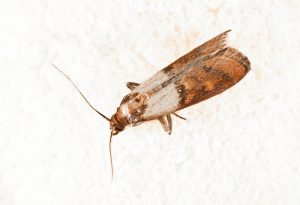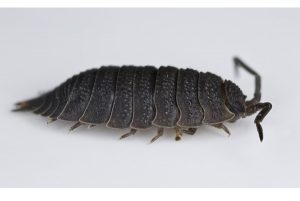
Paralysis ticks – All you need to know
The mention of paralysis tick (Ixodes holocyclus) can strike fear into the hearts of pet owners. The fear is justified… for a dog or cat, a bite from paralysis tick can lead to death in a very short time.
Even for humans a bite is cause for serious concern, with 95% of tick bites in eastern Australia being apportioned to paralysis ticks. Although the paralysis effects are cause by toxins release by the paralysis tick, they can also cause other diseases such as tick typhus.
General Tick Information
- Ticks are not actually insects, they are arachnids, so in fact more similar to spiders, in that the adults have eight legs.
- There are two types of ticks, soft-bodied ticks and hard-bodied ticks. Most tick species in Australia, including the paralysis tick, are hard bodied ticks.
- Ticks are found across Australia, but generally close to the coast, as they need moist habitats to survive. However, individual species may be confined to particular parts of Australia. Such is the case for the paralysis tick, which is only found on the east coast.
- Ticks are parasites, which means they need to live off another animal in order to survive. Ticks will parasitise a range of different hosts (animals), biting them to get a blood meal.
Paralysis tick life cycle
There are four stages to the tick life cycle
- Eggs
- Larvae (less than 1mm and actually only have 6 legs!)
- Nymphs (up to 2mm, with eight legs)
- Adults (4-5mm, but larger after a blood meal)
The whole life cycle takes about a year to complete. Although the various life stages can be present at any time of the year, the adults are most common from spring to mid summer (when they lay eggs), the larvae are most common in late summer into autumn and the nymphs more common in winter.
Ticks require a blood meal to develop and moult from one stage of its life cycle to the next and adult females require a blood meal as a protein source before laying eggs.
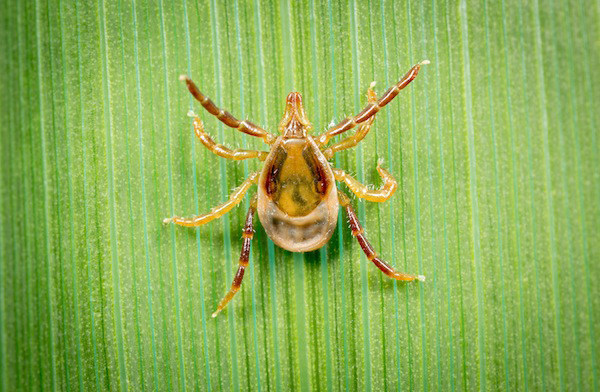
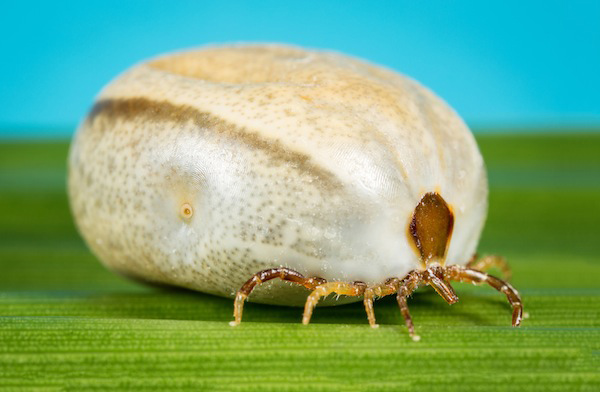
Ticks will feed on a variety on animals to get their blood meal. Larvae and nymphs will feed on birds and smaller mammals, whereas adults tend to feed on larger mammals such as cats, dogs and humans!
Where do paralysis ticks live?
Paralysis ticks are found on the east coast of Australia, typically within 30km of the coast, in moist forest areas. They may be in Tasmania, but are not found in South Australia, Western Australia or the Northern Territory. However, there are other Ixodes tick species, which are found in South Australia and Tasmania.
The tick larvae are also called “seed ticks” or “grass ticks”, partly due to their very small size and partly due to the fact they are typically found low down in the grass, on the ground or in the leaf litter. However, adults and nymphs can be found on the ground or low down in vegetation, but generally not higher than 50cm off the ground.
How to ticks get on you and your pet?
The idea that ticks drop down out the trees (and onto your head!) really is an urban myth. Ticks live on the ground or low down in the vegetation. The larger nymphs, and in particular the adults will climb up vegetation in search of a good location to clamber on board a passing large mammal. However, they generally climb no higher than about 50cm off the ground. When they get to a suitable vantage point they will “quest” – wave their front legs in the air – trying to pick up the odours, heat and vibrations of a potential host. They can’t jump, so they rely on their host to brush by, at which point they will ‘jump on board’.
How to prevent ticks biting your dog
- Regular veterinary tick treatment for your pet
- Reduce ticks in your yard
- Keep grass and vegetation cut back
- Consider a regular tick treatment for your lawn and garden
- Regularly check your pet for ticks, especially after walks in the bush
It is very hard to restrict where your pets roam, especially cats, so it is virtually impossible to prevent your pets coming into contact with ticks. As such, maintaining a regular tick treatment with a suitable veterinary product is vital if you live in tick prone areas.
But ticks don’t just live in the bush, they are quite happy to live in your backyard if the conditions are right. Keeping grass short and vegetation cut back will make the environment less attractive to ticks (less moisture and more sun). Keeping native animals out of your yard will help – bandicoots are common tick carriers – strong fencing buried into the ground should do the job.
Application of a regular tick treatment (such as PestXpert Pro Hose-On) to your lawn and garden will eliminate any ticks present, greatly reducing the chances of a tick bite.

Even if your pet has regular tick treatments and you carry out preventative measures, regular inspection of your pets for ticks, especially after walks in the bush, is just part of pet ownership.
How to prevent ticks biting you
Clearly the best way to avoid getting bitten is to avoid tick-infested areas in the first place. However, if that cannot be helped, here are the top tips to prevent a tick bite;
- Wear long sleeved shirts and long pants (tucked into socks)
- Wear light coloured clothing to make it easier to spot any ticks
- Apply a personal insect repellent to any exposed skin
- Treatment of clothing with permethrin insecticide (using specifically labelled permethrin wash kits) is also an option if entering heavily infested areas.
After visiting a tick-infested area, all clothing should be removed and checked for ticks. Placing clothing in a hot dryer for 20 minutes or in a sealed black plastic bag in the sun for an hour, will kill any ticks present.
It’s then important to carry out a full body check for ticks.
How should you search for ticks on your pet?
Checking for ticks on your dog or cat needs to be thorough but is obviously a lot easier and quicker with a short-haired variety. Run your fingers through their fur, feeling for any small bumps in the fur on or their skin. On feeling something suspicious, pull back the fur to inspect further. Remember it may be very small – the nymphs are less than 1mm and even an adult female, which as only recently started biting, will still be less than 5mm. If the tick has been feeding a while, it may be engorged and will be a lot larger, up to 1.5cm.
Make sure you cover all areas of the body, including ears, tail, toes and groin.
How should you search for ticks on your body?
Don’t forget to check yourself and your children after a bush walk. Checking yourself in the shower is a good option. Ticks love dark moist places, so under the hairline on your head, behind ears, under armpits and in the groin area are all favourite hiding places!
Symptoms of a paralysis tick bite in pets
Paralysis tick saliva contains protein toxins. These toxins are injected into the host when the tick commences feeding. It is these toxins that can lead to paralysis and death.
If you find a tick on your pet and it is not showing any signs of paralysis, you can remove the tick yourself (see below) and watch your animal closely for the next 24 hours. If your pet is showing no symptoms after 24 hours, it is unlikely that the bite was from a paralysis tick, or that even if it was, insufficient toxin was injected.
Early signs
- Change in pitch of dog bark or cat meow
- Weakness in the hind legs / sudden sitting down
- Vomiting (especially several times, often with froth)
Later signs
- Increased wobbliness in hind leg
- Increased salivation and vomiting
- Problems breathing – panting and coughing
If untreated the pet will likely die, so if you suspect a bite from a paralysis tick, take your pet to the vet immediately.
Symptoms of a paralysis tick bite in humans
Symptoms in humans are similar to those observed in animals, with unsteadiness and weakness in limbs, accompanied by flu-like symptoms (rashes, headache, fever) and possibly partial facial paralysis. Symptom severity will increase with time (even after tick removal). A tick anti-toxin is available and although recovery from a paralysis tick bite is often slow, there have been no human deaths in the past 70 years.
Ticks bites will often cause allergic reactions with some cases resulting in life threatening anaphylaxis.
Ticks can spread disease like tick typhus (flu like symptoms) which may take 1-2 weeks to develop; it is quite common for tick bites to remain itchy for several weeks
What should you do, if a tick bites your dog?
Time is of the essence with a paralysis tick bite, so as soon as you notice a tick (whether paralysis tick or not), you should take your pet to the vet immediately – dogs can show symptoms within 24 hours.
If you are confident in removing the tick safely yourself (before getting to the vet), it will reduce the amount of toxin entering the pet and can increase the chances of survival. (See removal guide below).
If you do remove the tick, make sure you take the tick with you to the vet so it can be identified.
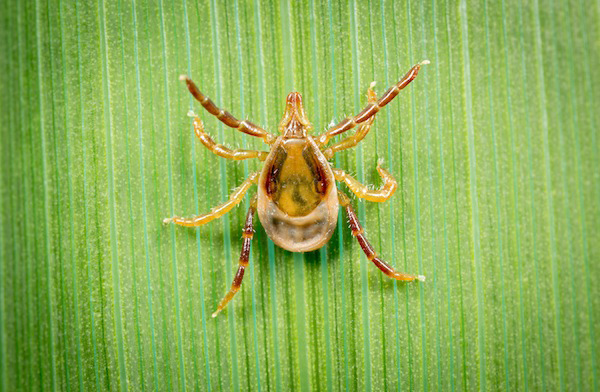
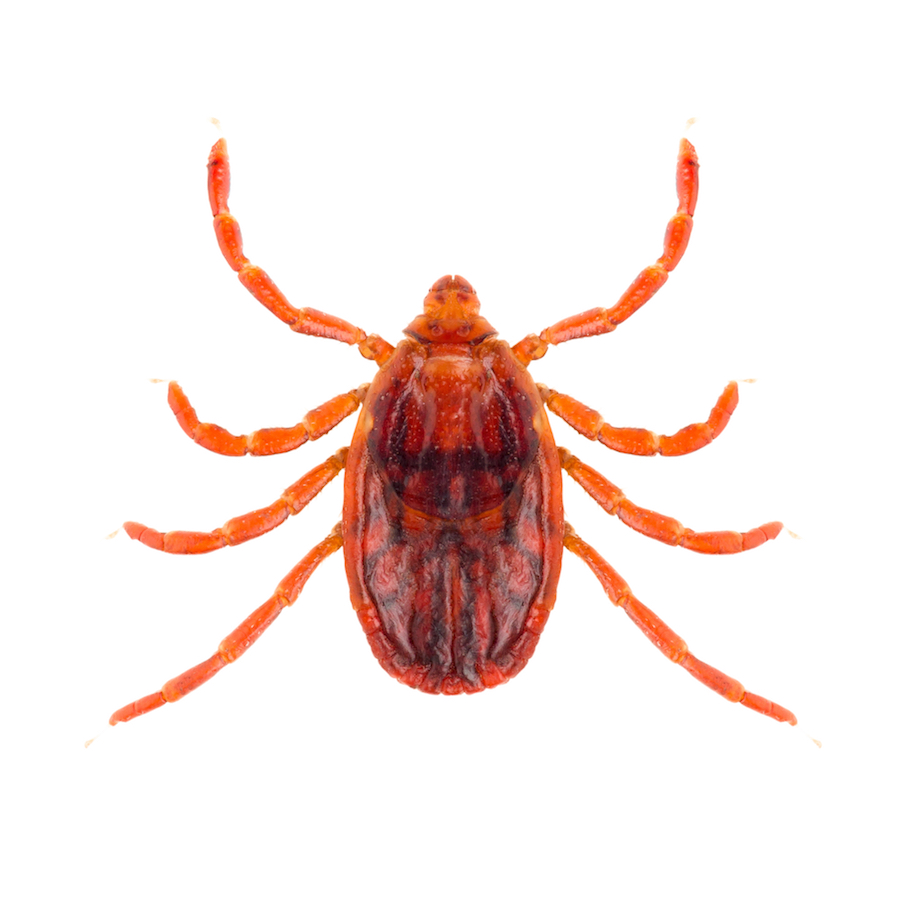
What should you do, if a tick bites you?
As soon as you realise you have been bitten, the tick should be removed (see below). If you are showing any of the symptoms of a tick bite, be it an allergic reaction or the effects of a paralysis tick bite, you should seek medical help immediately.
You should always keep an eye out for any ill effects for several weeks after being bitten, as some diseases can take days or weeks before symptoms present.
Allergic reactions to tick bites are quite common, and can get worse with successive tick bites, so if you are susceptible it’s best not to take any chances. It is important to note that you can develop an allergy to tick bites, so if you don’t get an allergic reaction to a tick bite, it doesn’t mean you won’t have an allergic reaction the next time.
How to remove a tick
If you find a tick, it is necessary to remove the tick as soon as possible, as the longer it remains in place, the more toxins it is injecting.
However, removing ticks is not that easy. If you have any doubt about how to remove a tick, it is best to take your pet to your vet or in the case of humans, go to your GP. It is important to remove the tick in one go, without agitating the tick as it is important to prevent the tick injecting more saliva with toxins and potentially regurgitating gut contents into the host, a sure result of squeezing the tick.
The recommended removal method is to grasp the tick by the head, as close to as possible to the entry point on the skin, using fine tipped forceps and pull upwards with steady pressure, avoiding twisting or jerking the tick.
An alternative for ticks on humans, especially with smaller ticks, is to treat the tick with a permethrin insecticide spray or scabies cream. The tick should then drop off 24 hours later or removed using fine tipped forceps.
Do not spray the tick with other chemicals as they could irritate the tick and cause the tick to inject more saliva.
If you are known to be allergic to tick bites, you should always go to a medical centre for tick removal.
Summary
If you are living on the east cost of Australia, especially if you’re a pet owner, awareness of how to prevent and treat tick bites can mean the difference between life and death. There is no need to panic; putting in place the preventative actions is key and checking for ticks will allow quick action to be taken
(Paralysis tick photos used with permission from Stephen Doggett)

